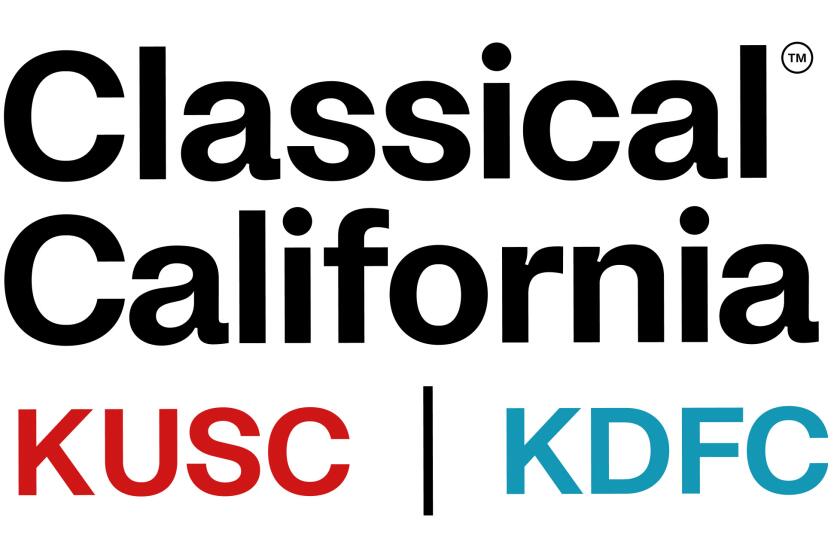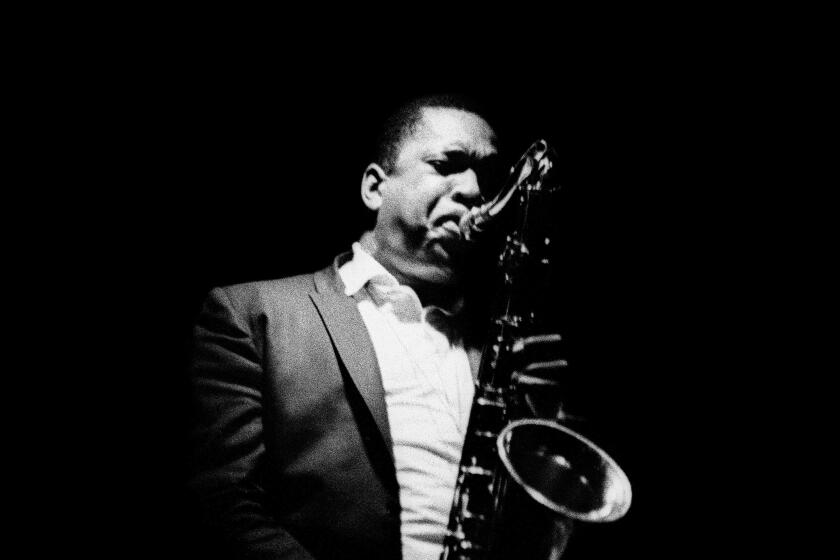THE STAMP OF STING : It’s Time to Recognize His Joyful Musicality and Sophisticated Grace
- Share via
Imagine all the bets Sting could have made three years ago when he walked away from the Police, the first superstar band to emerge from the British new-wave scene of the late ‘70s.
Anyone with a sense of rock history or even a modestly cynical view of human nature would have been willing to put up a week’s wages that Sting would eventually rejoin the other members for a worldwide reunion tour. If the fortune waiting at box offices around the world didn’t tempt him, surely sentiment would. Who can resist the love of a million fans?
Those betting on a reunion would have been willing to double their stake last year when Sting teamed up with his old Police mates (drummer Stewart Copeland and guitarist Andy Summers) for three benefit performances on the Amnesty International tour.
The speculation--even among associates of the band--was that Sting would get so caught up in the emotion of the mini-reunion that he would agree to hit the road one final time with the Police.
After all, he had already exorcised his need for artistic independence with “The Dream of the Blue Turtles,” his highly acclaimed 1985 solo album. What more was there to prove? The only questions seemed to be when and where the tour would start.
But Sting has so far defied the odds. Instead of joining a reunion tour, he dropped out of sight for several months to work on a second solo album. That collection, a two-record set titled “. . . Nothing Like the Sun” and due in stores Tuesday, is an extraordinary work that may finally convince doubting rock fans that a strong artistic heart is compatible with that handsome face.
One of the criticisms of “Blue Turtles” was that Sting--whose seductive eyes and million-dollar cheekbones make him one of rock’s most popular pinups--is too much of a rock ‘n’ roll aristocrat to be taken seriously as a social commentator. And there were a few clumsy moments on that first solo album.
This time, however, Sting’s social views--highlighted by the poignant “They Dance Alone,” a song of courage and hope inspired by his involvement with Amnesty International--are more assured. The best moments of this carefully designed and purposeful album, which also offers moments of humor and unusual tenderness, recall the joyful musicality and sophisticated grace of Paul Simon’s triumphant “Graceland” (see Chris Willman’s review on this page).
Few things can be taken for granted in the volatile world of pop music, but it looks like it’s also time to pay up on those Police reunion bets.
“To me, the Amnesty tours were definitely the Police’s way of saying goodby,” Sting said recently, sitting in an office on the A&M; Records lot in Hollywood. “There had been constant offers to get back together, and the longer we stayed away the bigger the offers became. But I just wasn’t interested. We had done it.
“We achieved what a band sets out to do, we had played Shea Stadium and sold millions of records. To do it again would just be boring and repetitious.”
So why get together even on the Amnesty tour?
“I felt it would be nice to say goodby properly and the Amnesty shows meant we could say goodby for a good cause. It allowed us to feel good about bowing out as opposed to just cashing our chips in and saying let’s make as much money as we can. . . . I have too much respect for what the band did to sell it like that.”
Gordon Matthew Sumner--Sting’s real name--is one of rock’s most articulate figures. The son of a milkman, Sting grew up in a working-class section of Newcastle, a heavily industrialized town in England. He recognized early that education was a key to a better life and he became an avid reader, eventually obtaining a teaching degree from a local college. Married early, Sting taught English in a convent school in Newcastle before moving to London to pursue a career in music.
Sting played jazz in those days, rather than rock, and made some extra money as a model. The Police was formed in 1977, and the group’s recording of “Roxanne,” a reggae-flavored rock ballad, was a hit in both the United States and England in 1979. By the time the group’s “Synchronicity” album was released in 1983, the band was well on its way to becoming the biggest draw in rock. More than 55,000 fans saw the Police at Hollywood Park in Inglewood. By the following spring, however, the Police--citing internal pressure and fatigue--called it quits.
Sting surprised fans of the band in “Blue Turtles” by returning somewhat to his jazz roots, teaming up on the album and tour with such respected musicians as saxophonist Branford Marsalis and keyboardist Kenny Kirkland.
As speculation flourished after the mini-reunion, Sting (who is divorced and now lives in England with actress Trudie Styler and their two children) settled in a New York apartment to write the songs for the new album.
Rather than use a single band, as with “Blue Turtles,” he used various musicians, depending on the mood of the tune. They included Marsalis and Kirkland from the first album, but also Summers on a couple of tunes, Dire Straits’ Mark Knopfler on one number and jazz composer Gil Evans and his orchestra on an elegant version of JimiHendrix’s “Little Wing.”
After completing the LP, Sting--who had already put together an extensive list of film acting credits--returned to Newcastle to act in “Stormy Monday,” a film also starring Melanie Griffith and Tommy Lee Jones. Returning home after several years is usually an emotional experience, but this was doubly so for Sting because his mother had died shortly before the album was finished. (Also this summer, he made a cameo appearance in a new Terry Gilliam film, “The Adventures of Baron Munchausen,” hopes to play the role of Pontius Pilate in Martin Scorcese’s “The Passion” before his global concert tour--which begins next month in South America and reaches the United States early next year.
“I look at music in the long run,” he observed. “I want to keep expanding my territory, so that if someone is surprised by something I do on this album, they won’t be surprised next time. My objective--and I think it is becoming clear with the solo albums--is to widen the territory that I’m allowed to work in.
“I find it quite stimulating to do a song like ‘Secret Marriage,’ which is based on a melody by Hans Eisler, who is this German composer, and then do a song like ‘Sister Moon,’ which is a kind of show tune if you like, and then ‘Little Wing.’ I’m 35 now and I don’t want to reach the age of 40 and feel trapped by any one style.”
The two songs that best underscore the ambition and range of “. . . Nothing Like the Sun” (the line is from a Shakespeare sonnet) are the witty, urbane “Englishman in New York”--a salute to Quentin Crisp, the author of “The Naked Civil Servant” and one of England’s most celebrated homosexuals--and “They Dance Alone,” a song inspired by the mothers, daughters and sisters of political prisoners in Chile who dance alone in a public protest ceremony, often with photos of their loved ones pinned to their clothes.
Sample lyric:
They’re dancin’ with the missing
They’re dancing with the dead.
They dance with the invisible ones
Their anguish is unsaid.
About the song, Sting said, “I was also intrigued because these women protest in a very feminine way. Their dancing is so much more powerful than burning cars or throwing Molotov cocktails.”
Feminine is a word that Sting used frequently during the interview. It’s something he sees as a link between several of the songs in the new album.
“If there is one pervasive kind of image in the lyrics, it’s of women, and particularly my mother, who was dying during this whole period,” he said. “I looked at the lyrics the other day and found the word mother about six or seven times. I was thinking a lot about women--not just women as lovers or mistresses--but older women, mothers, daughters, sisters.
“Almost every song has a sign of femininity in it. It’s something that is important to me not just in a sexual but in a spiritual way and social way. Even ‘Englishman in New York’ fits the (pattern). It’s about Crisp, a wonderfully flamboyant man . . . one of my heroes.
“He was gay at a time in the ‘30s when it was both against the law and incredibly dangerous to be flamboyant where he came from. I think he’s a hero, and what makes his heroism important is that it’s not macho heroism. He’s not this Rambo figure. He’s basically what he is and he dares the world to challenge his right to be what he is.”
More to Read
The biggest entertainment stories
Get our big stories about Hollywood, film, television, music, arts, culture and more right in your inbox as soon as they publish.
You may occasionally receive promotional content from the Los Angeles Times.










